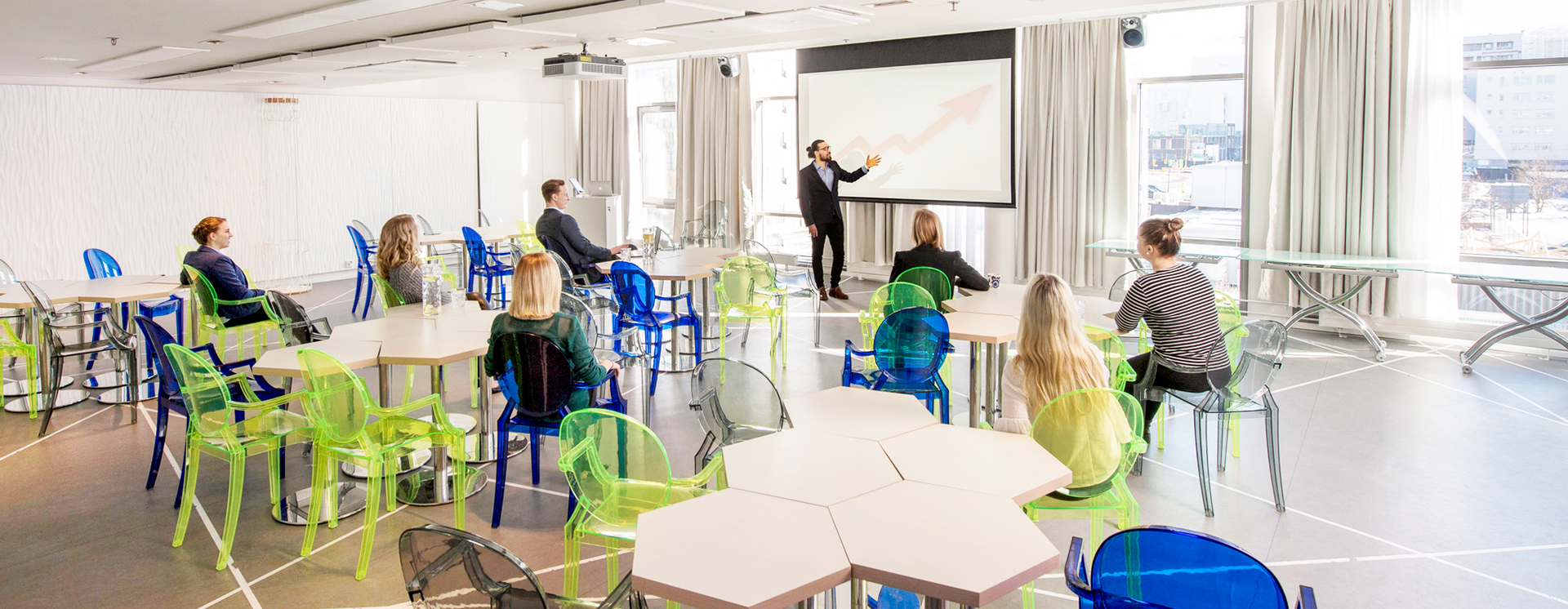Physical space and environment affect our behaviors greatly, often without us realising it. How can we then ensure the space we choose will work for our benefit and support the goal of the day? Also, what does it mean in the world of remote and hybrid meeting environments? Let’s see how one can plan a successful meeting with a purposeful space.
Things to consider when choosing a face-to-face meeting space
The Interior of a meeting room should be modified according to the goal of the meeting according to a study on participant’s behaviour. Choosing the right space play a significant role and affects the desired outcome. When planning and booking the next meeting, consider the following:
What is the purpose of the meeting? Think about the goal of the meeting, what is it really that you want to achieve? Every aspect of planning should support the goal.
Meeting space should support the goal of the day. Understanding the goal will help you to choose the correct space for the meeting. If you are looking for having active discussions or exchanging free-flow of creative ideas, choose a more stimulating space. If you are looking for a place to focus and concentrate, choose something more calming. Stop to think about what kind of behaviour you want and choose the space accordingly.
“New ideas require movement & change”
Eliminate distractions. Concentration is harder if your own routines and tasks are occupying your mind.“In order to be truly able to break away from one’s own work tasks, one must create one’s own separate space, where people are taken to a different state of mind.” says Juho Toivola in the interview. A colleague of yours might need something quickly from you, which takes your mind away from the meeting. You might decide to brew some coffee during the meeting, or perhaps start to sort out the lunch, etc. This leads again to losing focus and not achieving the goal.
Things to consider planning a purposeful hybrid meeting(space)?
Virtual and hybrid meetings are here to stay. Nothing will ever fully replace live meetings, but you can influence a great deal in creating a successful hybrid event with these tips.
Meeting rules and etiquette. In every meeting, all participants should know their roles (why am I attending this?) and what is expected from them (what is my contribution?). Having a clear goal and a set of guidelines beforehand is important especially in virtual and hybrid settings, as there could be more distractions for remote participants. In hybrid settings, there are always two groups of participants: one on-site and the other remote. Share a common set of rules and meeting etiquette for everyone, for instance how to participate and engage during the meeting.
Ambiance. Try getting the participants in the right mood already from the start. If you are not feeling energised and as a part of the meeting straight away it is hard to maintain motivation throughout the day.
Strive to create the meeting or an event as memorable and engaging as possible, since the holistic meeting/event experience will matter more than ever.
One concrete example we tried and was proven successful was creating a special video welcoming for the remote participants. This will act as a small ‘transition’ moment for them. The remote participants otherwise will miss out on the transitional ‘settling in’ phase, which involves taking morning coffee and enjoying casual talks with other participants before the start of the event. With a video, you can set the right mood and make sure they feel welcomed.
Meeting technology. Make sure the audio and video technology involved in the virtual/hybrid event works. Make sure to reserve a time for a rehearsal. For a quality event, we also recommend having a partner with the right professional know-how. Remember to do the test with all stakeholders, such as a remote speaker, an on-site host, remote participants etc. Make sure to also tab into a wide range of virtual tools to utilise in engaging your audience, like break-out rooms, post-its, and polls.





